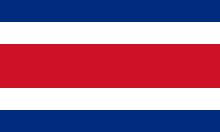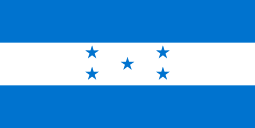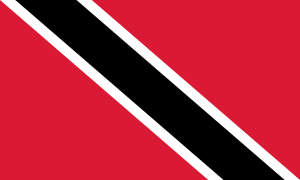In association football, the term Hexagonal (known in English as The Hex[1]) is often used to refer to the final round of FIFA World Cup qualification among the six remaining teams in CONCACAF.[2] The six team round robin format has been used by CONCACAF since 1997, as part of the 1998 FIFA World Cup qualification process.
The United States, Mexico and Costa Rica have been present in every Hexagonal to date.[3]
United States vs. Mexico rivalry
The United States and Mexico have been the most successful teams in the Hexagonal, with both teams qualifying for every World Cup since 1998. Indeed, the Mexico–United States soccer rivalry has been hotly contested during the Hexagonal. Matches between the two opponents hosted by Mexico often sell out the 100,000 seat Estadio Azteca in Mexico City; matches hosted in the United States are often held in cold northern cities such as Columbus, Ohio.
1998
The first hexagonal round was played in 1997, between March 2 and November 16. Mexico topped the round robin undefeated, being the only team to do so.[4] Jamaica qualified to their first (and so far, only) FIFA World Cup.[5] It was Canada's only participation in the hexagonal round, and their last appearance at the final stage of a FIFA World Cup qualification.[6]
| Pos |
Team |
Pld |
W |
D |
L |
GF |
GA |
GD |
Pts |
| 1 |  Mexico Mexico |
10 | 4 | 6 | 0 | 23 | 7 | 16 | 18 |
| 2 |  United States United States |
10 | 4 | 5 | 1 | 17 | 9 | 8 | 17 |
| 3 |  Jamaica Jamaica |
10 | 3 | 5 | 2 | 7 | 12 | –5 | 14 |
| 4 |  Costa Rica Costa Rica |
10 | 3 | 3 | 4 | 13 | 12 | 1 | 12 |
| 5 |  El Salvador El Salvador |
10 | 2 | 4 | 4 | 11 | 16 | –5 | 10 |
| 6 |  Canada Canada |
10 | 1 | 3 | 6 | 5 | 20 | –15 | 6 |
2002
The second edition of The Hex was played in 2001, between February 28 and November 11. It was topped by Costa Rica, who totaled a record 23 points.[7] The Costa Ricans marked the first defeat Mexico has ever had at a World Cup qualification match at home soil, in a match known as El Aztecazo.[8]
| Pos |
Team |
Pld |
W |
D |
L |
GF |
GA |
GD |
Pts |
Qualification |
|
 |
 |
 |
 |
 |
 |
|---|
| 1 |
 Costa Rica Costa Rica |
10 |
7 |
2 |
1 |
17 |
7 |
+10 |
23 |
Qualified to the 2002 FIFA World Cup |
|
— |
0–0 |
2–0 |
2–2 |
2–1 |
3–0 |
| 2 |
 Mexico Mexico |
10 |
5 |
2 |
3 |
16 |
9 |
+7 |
17 |
|
1–2 |
— |
1–0 |
3–0 |
4–0 |
3–0 |
| 3 |
 United States United States |
10 |
5 |
2 |
3 |
11 |
8 |
+3 |
17 |
|
1–0 |
2–0 |
— |
2–3 |
2–1 |
2–0 |
| 4 |
 Honduras Honduras |
10 |
4 |
2 |
4 |
17 |
17 |
0 |
14 |
|
|
2–3 |
3–1 |
1–2 |
— |
1–0 |
0–1 |
| 5 |
 Jamaica Jamaica |
10 |
2 |
2 |
6 |
7 |
14 |
−7 |
8 |
|
0–1 |
1–2 |
0–0 |
1–1 |
— |
1–0 |
| 6 |
 Trinidad and Tobago Trinidad and Tobago |
10 |
1 |
2 |
7 |
5 |
18 |
−13 |
5 |
|
0–2 |
1–1 |
0–0 |
2–4 |
1–2 |
— |
Source:
2006
- United States finished ahead of Mexico based on results between tied teams which were the first tiebreaker.
- Mexico, United States and Costa Rica advanced to the 2006 FIFA World Cup.
- Trinidad and Tobago advanced to the AFC-CONCACAF play-off.
2010
The six teams that reached the fourth round formed one double-round-robin, home-and-away group nicknamed the "Hexagonal." The top three teams qualified for the 2010 FIFA World Cup. The fourth place team qualified for a home-and-away play-off against the fifth-place team from CONMEBOL.
2014
In the fourth round, the three group winners and three runners-up from the third round competed in a double round robin, including a home and away match against the other five teams between 6 February and 15 October 2013. The draw for 'The Hex' was conducted by FIFA on 7 November 2012.[9]
The top three teams qualified directly for the 2014 FIFA World Cup finals, while the fourth-placed team will play a home-away series against New Zealand, the winner of Oceania. Teams are ranked first by total points in all games, then, if tied, by best goal differential in all games, then by total goals in all games. If still tied, the same criteria are applied to games among the tied teams.
2018
All Time Table
3 points per win, 1 point per draw and 0 points per loss.
- Updated as of matches played on 15 November 2016
References